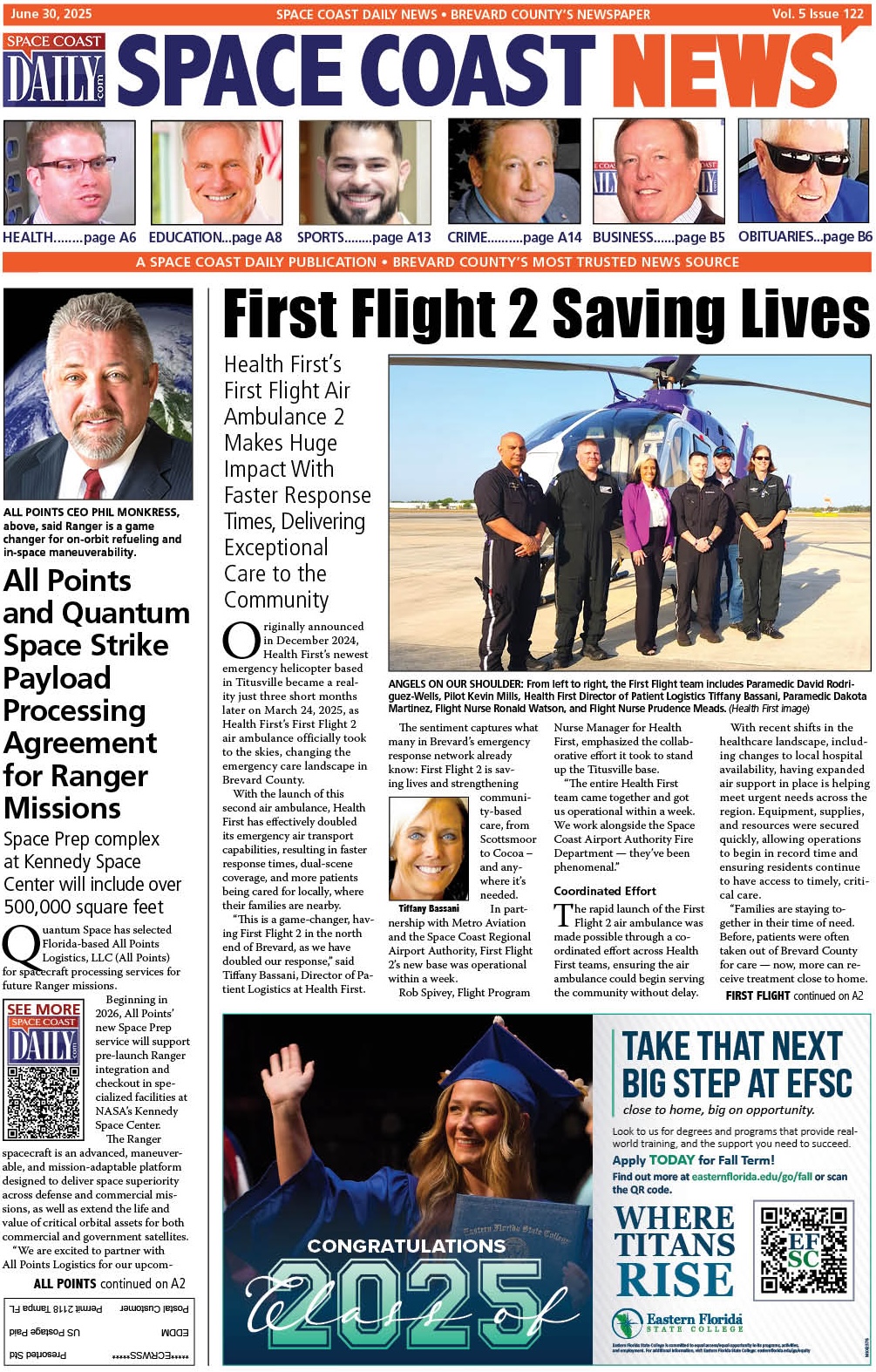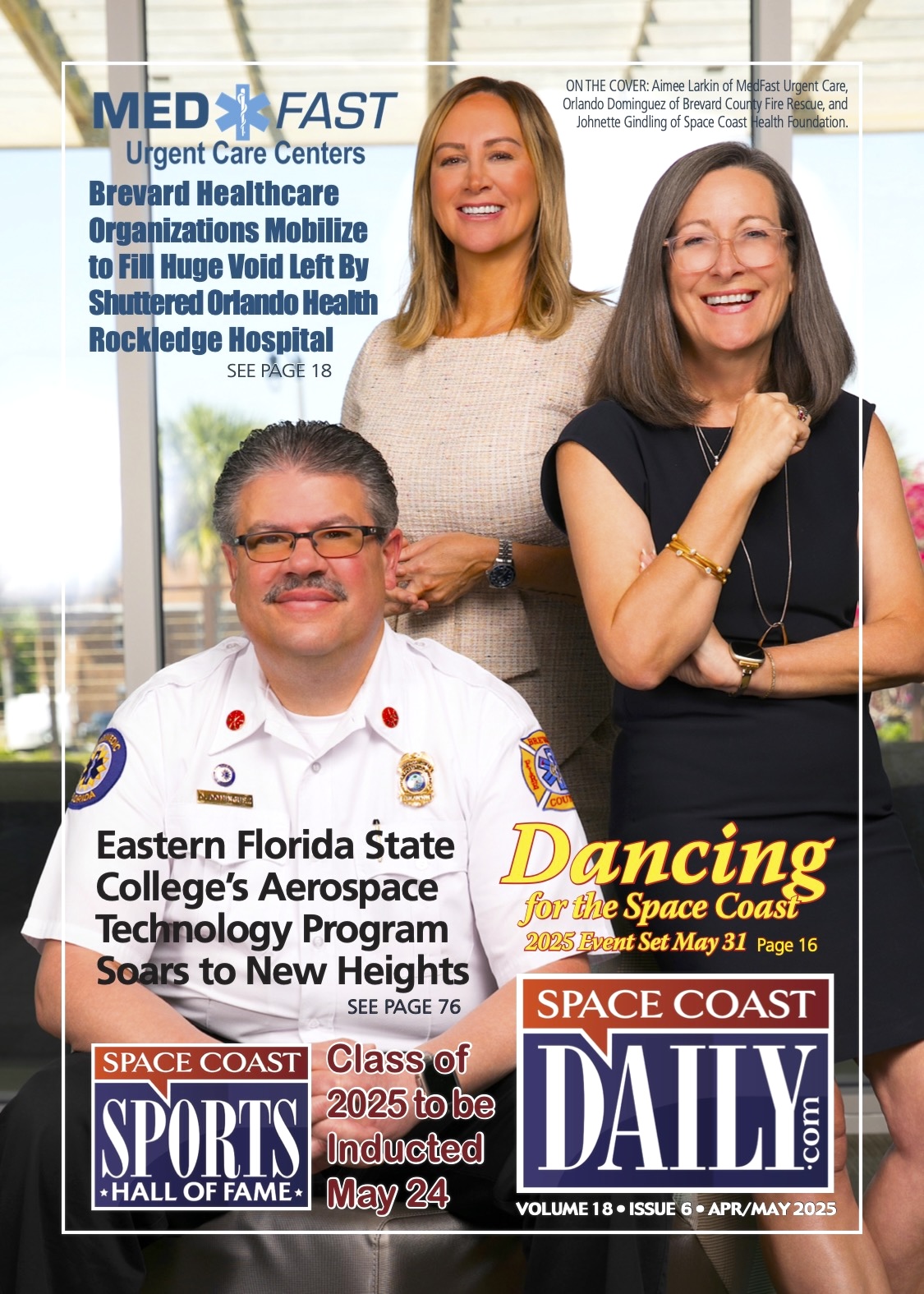Human Life Dependent On Grazing Land Management
By Dr. Sandra Wise, Eco/Agriculture Correspondent and Licensed Psychologist // June 4, 2013
BOND BETWEEN HUMAN HEALTH & THE LAND
ABOVE VIDEO: Students from the College Internship Program Brevard Campus take a journey through a dense forest of cypress trees as part of an equine-assisted learning experience conducted by the mental health staff at Eye of a Horse, an animal-assisted mental health program located on the grounds of a 4700-acre wildlife preserve known as Forever Florida. These students, who have all been diagnosed with Asperger’s, are learning patience, problem-solving, perspective-taking, planning, awareness, and social skills by navigating through the cypress stand while maintaining responsibility for themselves and their Florida Cracker horses.
“The toe bone’s connected to the leg bone. The leg bone’s connected to the knee bone. The knee bone’s connected to the thigh bone . . . . Dem Bones, Dem Bones, Dem Dry Bones . . .”
—Traditional spiritual song based on a bible verse from Ezekiel-melody by James Weldon Johnson (1871-1938)
It turns out that on this earth more things are connected than just bones. The ground soil’s connected to the plant life. The plant life’s connected to the animal life. The animal life’s connected to the human life. And the quality of human life is directly affected by the health of these elements.
GRAZING LANDS KEY TO ENVIRONMENTAL HARMONY
As a mental health provider headquartered at the 4,700-acre nature preserve and working cattle ranch known as Forever Florida, I have long been a proponent of psychotherapy interventions that incorporate elements of nature.
However, I must admit that I had never really stopped to think about the economic, environmental and social benefits of our Florida grazing lands. But since preparing for and attending the 5th National Conference on Grazing Lands, sponsored by The Grazing Lands Conservation Initiative (GLCI), I’ve learned that grazing land management is indeed directly related to numerous issues that should concern all of us.

Properly managed grazing lands improve the environment and change energy from the sun into protein, something we all need for our very survival. Grazing lands act as giant buffers, with tremendous environmental benefits. Maintaining these national treasures—our nation’s private and public grazing lands—is truly important.
According to the experts, the health of all these elements—soil, plants, animals and humans—are closely connected. GLCI, a nationwide consortium of individuals and organizations working together to maintain and improve the management and health of the nation’s grazing lands, informs the public of the contributions that well-managed grazing lands make to the quality of life of every citizen.
One lesser-known contribution that I will be highlighting in this article is to our own mental and emotional health. Indeed, grazing lands and similar natural settings can have a potent effect on our cognitive, emotional and behavioral systems—particularly today when a large percentage of human beings are ensconced in a world far from our evolutionary home in nature—a new world of concrete, electronics, and windowless cubicles.
FLORIDA GRAZING LANDS VITAL TO ECONOMY AND ECOSYSTEM
Few people associate Florida with grazing. It is common to think of the West and Midwest as the setting for grazing livestock. It often comes as a surprise to people who think of Florida as only the land of citrus, sunny beaches and the space program, to learn that cattle ranching and grazing in the United States actually started in Florida, after Spanish cattle, horses and pigs were brought from Spain and offloaded in Florida by Ponce de Leon in 1521.
Florida is home to four of the United States’ 10 largest cow-calf operations and our state ranks 12th in the nation in number of beef cows.
From Florida’s beginnings, ranching has been a vital and integral part of its economy and ecosystem. Cattle ranches produce food for human consumption, taxes to support roads and schools and government, and a protected refuge for wildlife. The open rangelands provide the greenbelts essential to balance the pollution and environmental contamination generated by expanding urban areas.

According to Pete Deal, Natural Resources Conservation Service (NRCS) Area Range Management Specialist from Kissimmee, most of the threatened and endangered species that occur in Florida exist now on rangelands that have been managed for grazing and/or timber.
The Crested Caracara relies significantly on open lands and maintained pastures that are kept free of wood encroachment and haven’t been planted to grow crops or citrus. Several of these majestic birds nest on the grounds of Forever Florida, and are regularly spotted by clients participating in our animal-assisted mental health programs that take place in grazing pastures.
Thoughtful landscape management practices are also important for the Florida panther. A significant portion of the Florida panther habitat recovery area is primarily relying on grazing lands with the focus on keeping those lands in grazing.
If they are converted to urban areas or to citrus or crops, the wildlife habitat and the food sources for the panther will decline. Grazing land agriculture allows the land manager to maintain those sites in a diversity of conditions and habitats.
INTERDEPENDENT ‘WEB OF LIFE’
One of the conference speakers, Dr. Fred Provenza, Utah State University professor emeritus of animal behavior and management, describes a concept he calls “the web of life.” Provenza succinctly captured this concept as he passionately related to the packed house at the Grand Caribe Convention Center in Orlando, “Nature is not a collection of independently operating parts.”
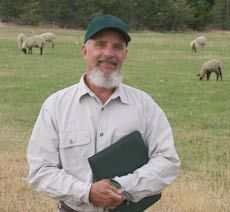
For the past 30 years, Provenza’s group has produced groundbreaking research that laid the foundations for what is now known as behavior-based management of landscapes.
That body of work, firmly grounded in the natural behavior patterns of animals and humans, has inspired researchers in disciplines as diverse as chemical ecology, ruminant nutrition, human nutrition and biopsychology, animal welfare, landscape restoration ecology, wildlife damage management, pasture and rangeland science and management, and rural sociology and eco-development.
Provenza’s work led to the formation in 2001 of an international network of scientists and land managers from five continents. That consortium, known as BEHAVE (Behavioral Education for Human, Animal, Vegetation and Ecosystem Management), is a research and outreach program that seeks to understand the principles of animal behavior.
The group is committed to integrating behavioral principles and processes with local knowledge bases to enhance ecological, economic and social values of landscapes.
NATURE’S THERAPEUTIC IMPACT ON HEALTH AND WELLBEING
Now Dr. Fred Provenza can add to his list of avid followers the field of clinical psychology and counseling—in the form of the mental health staff and equine educators at the Eye of a Horse mental health program at Forever Florida.
Our clients, who consist of ordinary folks working on issues as simple as minor relationship glitches, to young adults with Asperger’s working on “social thinking” skills, to emotionally disturbed adolescents dealing with histories of abuse and neglect, speak very positively about the impact of their interactions with the free-roaming cows and horses and beautiful grazing pastures that are incorporated into their therapy. And now even I have a greater understanding as to why this may be the case.
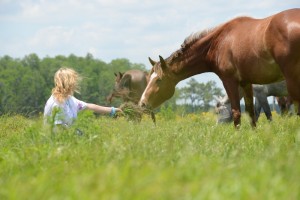
During the conference proceedings, I had the opportunity to discuss the mental health benefits of exposure to nature with Dr. Provenza. He expressed interest in our unusual use of the livestock and grazing lands at Forever Florida.
We both, of course, share a common interest in the ways that nature ultimately impacts human beings, although his emphasis has been more directly related to issues regarding herbivores and their foraging and habitat preferences and behaviors.
He also highlights in his presentations the concept of healthy foods for human consumption coming from healthy plants and healthy grazing stock. In communications shared since the conference I have learned that Dr. Provenza also has a broader interest in the ways nature affects the overall health of human beings, including their mental health.
IMMERSION IN NATURE A MENTAL HEALTH PRESCRIPTION
The staff and supporters of the Eye of a Horse animal-assisted psychotherapy program at Forever Florida have long been able to draw a straight line from the beautiful open grazing pastures and foraging livestock at Forever Florida to the positive thoughts, feelings, and behaviors of our clients who struggle with mental health challenges and come here to work with free roaming cows and horses as part of their treatment. But I must admit there was a lot I didn’t understand about why these added elements of living things—plants and animals—are so impactful in the therapeutic process.

The following are just a few of the more recent studies that have been published regarding emotional, cognitive, and behavioral responses to environmental exposure.
- In one study, 71% of people found a reduction in depression after going on an outdoor walk versus a 45% reduction by those who went on an indoor walk. (Wolf & Flora, 2010. Mental Health and Function-A Literature Review)
- After fatiguing subjects’ ability to maintain directed attention, randomly assigned participants spent 40 minutes walking in a nature preserve, walking in an urban area, or in passive relaxation conditions. Results: Those who had walked in nature performed better than the other participants on a standard proofreading task. They also reported more positive emotions and less anger. The study offers evidence of greater “restorative effects” arising from experiences in nature. (Terry Hartig, 2003)
- Outdoor activities can help alleviate symptoms of Alzheimer’s and dementia. Exposure to gardens can improve quality of life and function by reducing negative behaviors up to 19%. (Mooney, 1992) Better sleep patterns, improved hormone balance, and decreased agitation and aggressive behavior have all been observed in dementia patients in association with contact with nature and the outdoors. (Chalfont, 2005)
- Children diagnosed with Attention Deficit Hyperactivity Disorder (ADHD) who played in windowless indoor settings had significantly more severe symptoms than those who played in grassy, outdoor spaces. (Taylor & Kuo, 2001)
- Children diagnosed with ADHD were taken on walks in three different environments over a period of three weeks. After each walk, concentration was measured using the Digit Scan Backwards test. Results showed that children with ADHD concentrated substantially better after a walk in nature than after walks in urban or suburban areas. The results suggested that nature has a calming, restorative effect on children and adolescents with ADHD, reducing their symptoms and even having a positive effect in cases where other treatments offer only limited relief. (Faber Taylor & Kuo, Landscape and Human Health Lab at the University of Illinois)
NATURE’S WHOLE GREATER THAN SUM OF ITS PARTS
In today’s world, the overwhelming majority of mental health treatment and counseling sessions take place in traditional office settings. Some practitioners do try to bring elements of the outdoors into their offices by displaying nature photographs or having plants (both real and artificial) and perhaps an aquarium of fish in the office.
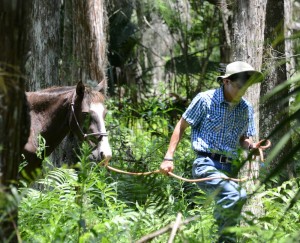
Some practitioners also recommend adjunct approaches or “homework” assignments such as physical exercise (most often taking place in an indoor health center) and activities aimed at stress-reduction and relaxation, such as massage (usually administered indoors—perhaps with soothing nature sound effects). But studies would suggest that these approaches do not offer the same benefits as direct contact with nature.
I resonate perfectly with the information Dr. Provenza presented at the Grazing Lands Conference indicating that one cannot extract the basic elements out of the “whole” and expect the same health advantages. He uses the example of foods: you cannot extract the compounds out of healthy natural foods, put them in a pill and expect to reap the same benefits as eating the whole foods. It doesn’t work well for cows and horses, and it doesn’t work well for humans.
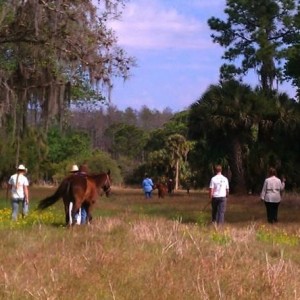
Studies now indicate that this line of reasoning also applies to human activities that are extracted from a healthy natural environment. For example, most mental health professionals today acknowledge the benefits of physical exercise for mild or moderate depression.
But studies indicate that you simply don’t gain the same benefits from walking on a treadmill in an air-conditioned building, as you do from walking in nature. For it’s not solely the physiological aspects of exercise that help relieve depression—according to the research it’s physical-exercise-out-in-nature that is most effective. There is something extra that comes with the whole package.
So I will continue to advocate for the great outdoors and direct interactions with cows and horses in beautiful grazing pastures far away from busy highways, tall buildings and electronic devices, where one can experience first-hand a sense of connectedness to nature that is often difficult to find today.
IRREFUTABLE BOND BETWEEN HUMAN HEALTH AND THE LAND
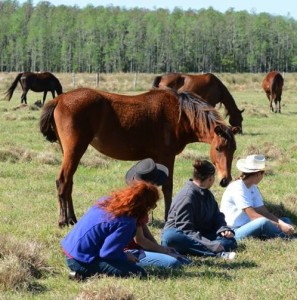
At the Grazing Lands Conference, I felt in the presence of folks who understand this connectedness and, though focused in other areas of practice—land management, ranching and farming, ecology, and conservation—are nevertheless working diligently to promote and maintain what was once a rich resource for us all. As a mental health professional, I now join them in this effort.
The bottom line is that regardless of one’s agenda or specific interest or lack of interest in plants, animals, nature and landscapes, human health is closely tied to the health of the land. So please walk on the grass! And when out there, please commune with as many creatures as possible.
ABOUT THE AUTHOR
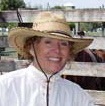
Dr. Sandra Wise has worked in private practice, was the Director of Mental Health for several Colorado prisons and for the Delaware State Department of Corrections, and is the creator and co-founder of the Eye-of-a-Horse program at Forever Florida. She has taught graduate-level courses in clinical psychology and has conducted numerous workshops and clinics, assisting clients of all ages and life challenges. In each of these settings, she has been highly effective in helping her clients and students improve self-awareness and understanding. In 2002, Dr. Wise began utilizing principles of applied behavioral analysis in training horses and cattle, and her skills as a psychologist have permitted her to achieve amazing results. The combination of Dr. Wise’s horsemanship and psychotherapeutic skills creates unique opportunities for exploration, insight, and dynamic growth for her equine-assisted learning/therapy clients.




